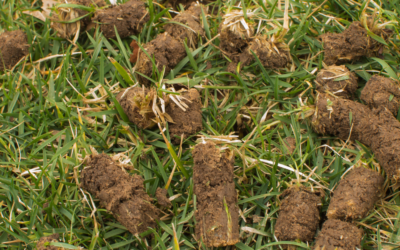Choosing a lawn is one of the most important decisions you can make in your lawn journey. The reasons are simple, a lawn that is not suited to that environment simply needs more care in nearly every way. In this article we review the most common lawn types, where you can source them from and what environments they are best suited to.
The most common lawn types in Australia can be separated straight away into 2 groups.
Warm Season Grasses
- Couch
- Hybrid Couch
- Blue Couch
- Kikuyu
- Buffalo
- Zoysia
Cool Season Grasses
- Tall Fescue
- Rye Grass
These are not all the grasses in Australia used for lawn but they are the most common. We’ve covered them all in general terms but please keep in mind turf breeding in Australia is fantastic and as such there is differentiation among the varieties.
Choosing a lawn type by examining the grasses
When choosing a lawn type it’s important to pick one that will have reduced inputs, so we have chosen to focus on the amount of maintenance as our first way of separating them.
Warm season grasses as the name suggests, love warm soil and lots of sun. They create beautiful fine lawns, have great recovery power and are drought tolerant.
Couch (Cynodon dactylon)
A great grass that provides a dense thick lawn with good green/blue colour. Loves warm temperatures and can also tolerate below zero temperatures. It comes in a few variations from common couch to some sterile hybrids that have been mutated using radiation to improve the quality. While a great grass the common version and earlier hybrids require more inputs than hybrid couch to maintain the same colour.
Hybrid Couch (Cynodon dactylon x transvaalensis)
This one is a hybrid by crossing 2 different grasses. Designed for the best stadiums and golf courses these hybrids have improved colour, finer leaf and less inputs required. Just watch out as this one is a fast grower, this can be managed easily with plant growth regulators like Primo Maxx.
Blue Couch (Digitaria didactyla)
Installed into many gardens in the 1960’s we believe that’s where it should stay. This grass requires a lot more input from water, fertiliser and is more prone to disease. Only put down if you love the colour or have an existing patch.
Kikuyu (Pennisetum clandestinum)
Another grass type installed in the 1970’s but fortunately new improved dwarf kikuyu varieties have improved a grass that would otherwise be dropping off our list for recommendation. With a tighter finer leaf and improved colour its growth is not as aggressive and can be controlled with applications of Primo Maxx.
Buffalo (Stenotaphrum secundatum)
The most popular grass after kikuyu lost favour and it is now present across a large number of lawns Australia wide, particularly in NSW. It’s main improvement on the above grasses is its shade tolerance vs the other warm season grasses. Its dense formation means reduced water, fertiliser and less weeds, the kind of features we like.
Zoysia (Zoysia spp.)
The newest grasses to Australia but by no means new. Zoysia will tolerate more shade than the other grasses but it does love heat so make sure you have plenty of it. Highly tolerant to wear and a slow grower makes for less mowing and less care but slow growing means it is slow to recover if damage does occur.
Cool season grasses are often believed to grow best in Winter but that’s not the case, their peak growth periods are in Spring and Autumn with extreme heat or cold causing issues with their growth.
Tall Fescue (Festuca arundinacea)
Is the most drought tolerant of all the cool season grasses and our favourite cool season grass for long term lawns. It tolerates high levels of shade.
Rye Grass (Lolium spp.)
Recommended for oversowing in Winter on lawns but beyond that it grows faster and the colour is not as good as a Tall Fescue. Some newer varieties are heavily competitive though.
Which lawn type is right for you based on your environment?
Now that you know a little about them it’s fair to say we have narrowed it down a bit to our favourites.
Hybrid Couch, kikuyu, buffalo and Tall Fescue are (in our opinion) the standouts.
To narrow it down further we need to look at your climate. Start by downloading an app for your phone or tablet that shows the path of the sun. There’s plenty out there for free, just search “sun path”.
Hybrid couch
Loves sun, do you have 7+ hours of sun in the areas you are putting this lawn? You may need to compromise and put a garden bed along your northern fence line to allow for the sun to hit your lawn. Trees are better planted on the southern side of the property. It tolerates high and low temperatures but you will be disappointed if you aren’t getting good light and temperatures conditions for growth for at least 4 months of the year. Can come up ok with a rotary mower at long height but for short cutting a cylinder mower is recommended.
Kikuyu
Very versatile grass that also tolerates high and low temperatures but doesn’t quite have the range of hybrid couch. Kikuyu will tolerate lower shade than couch but it won’t tolerate the high extreme temperatures of the very northern part of Australia.
Buffalo
It’s the in betweener this one, will tolerate lower shade and full sun. Not as aggressive grower as many of the others and its ability to be healthy and happy with a low amount of inputs makes it very popular. Does go a little orange (depending on variety) in high frost areas and in the hottest parts of Australia your couches will require significantly less water.
Tall Fescue
The best cool season we have to offer in Australia. It’s not suitable for the hotter areas but this is the one for cooler areas. It survives as high as Sydney in a very heavily shaded lawn.
Not sure which lawn type suits you?
If you’re still not sure than simply reach out to us and tell us a bit about your area and lawn. Just make sure you download the sun path app first as the hours of sunlight is going to be one of the first questions you get asked.


